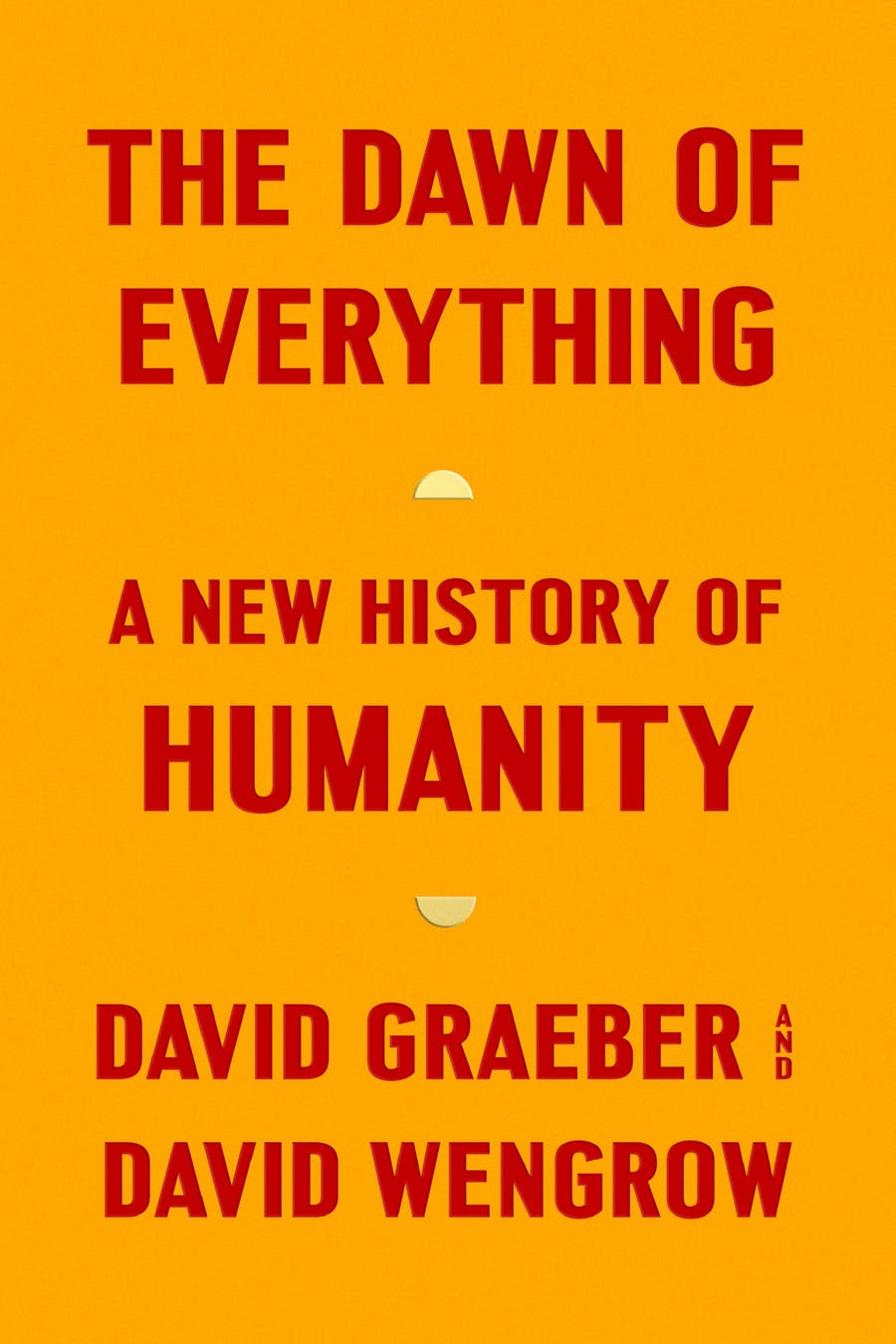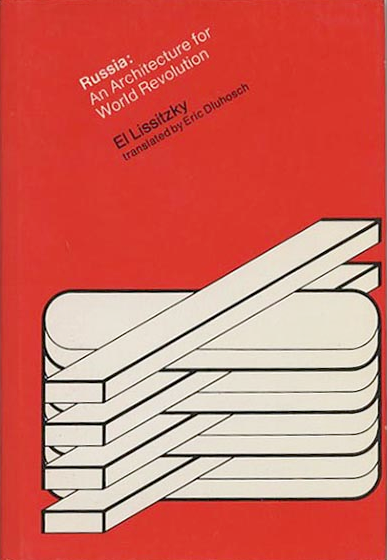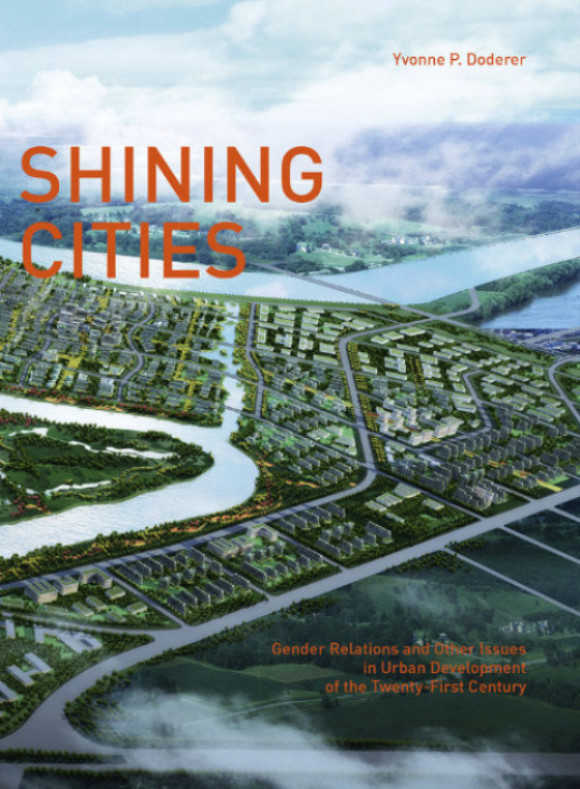David Graeber, David Wengrow: The Dawn of Everything: A New History of Humanity (2021)
Filed under book | Tags: · agriculture, bureaucracy, city, critique, history, human, indigenous peoples, politics, production, progress, property, sovereignty

“For generations, our remote ancestors have been cast as primitive and childlike–either free and equal innocents, or thuggish and warlike. Civilization, we are told, could be achieved only by sacrificing those original freedoms or, alternatively, by taming our baser instincts. David Graeber and David Wengrow show how such theories first emerged in the eighteenth century as a conservative reaction to powerful critiques of European society posed by Indigenous observers and intellectuals. Revisiting this encounter has startling implications for how we make sense of human history today, including the origins of farming, property, cities, democracy, slavery, and civilization itself.
Drawing on research in archaeology and anthropology, the authors show how history becomes a far more interesting place once we learn to throw off our conceptual shackles and perceive what’s really there. If humans did not spend 95 percent of their evolutionary past in tiny bands of hunter-gatherers, what were they doing all that time? If agriculture, and cities, did not mean a plunge into hierarchy and domination, then what kinds of social and economic organization did they lead to? The answers are often unexpected, and suggest that the course of human history may be less set in stone, and more full of playful, hopeful possibilities, than we tend to assume.”
Publisher Farrar, Straus and Giroux, November 2021
ISBN 9780374157357, 0374157359
xii+692 pages
Reviews: William Deresiewicz (The Atlantic, 2021), Giulio Ongaro (Jacobin/Tribune, 2021), Jennifer Schuessler (The New York Times, 2021), Kwame Anthony Appiah (The New York Review, 2021), David Priestland (The Guardian, 2021), Emily Kern (Boston Review, 2021), Steve Rushton (Bella Caledonia, 2021), George Scialabba (New Republic, 2021), Chris Knight, Nancy Lindisfarne and Jonathan Neale (Monthly Review, 2021), Tunku Varadarajan (Wall Street Journal, 2021), Erle C. Ellis (Science, 2021), Peter Isackson (Fair Observer, 2021), Noah Berlatsky (NBC News, 2021), Annalee Newitz (Washington Post, 2021), Matthew Porges (LA Review of Books, 2022), Richard Handler (TLS, 2022), anon. (Astral Codex Ten, 2022), Milena Bartlová (A2larm, 2022, CZ), Joe Gill (Middle East Eye, 2023), more.
Book website
Publisher
WorldCat
El Lissitzky: Russia: An Architecture for World Revolution (1930–) [German, English]
Filed under book | Tags: · architecture, city, russia, soviet union, urban planning

” El Lissitzky ‘s book is a classic in architectural and planning theory, as well as an important document in social and intellectual history. It contains an appendix of excerpted writings by his contemporaries – M. J. Ginzburg, P. Martell, Bruno Taut, Ernst May, M. Ilyin, Wilm Stein, Martin Wagner, Hannes Meyer, Hans Schmidt, and others – all of whom illuminate the architecture and planning of Europe and Russia during the 1920s. There are over 100 plates and drawings.”
First published as Russland. Die Rekonstruktion der Architektur in der Sowjetunion, Anton Schroll, Vienna, 1930.
New edition
Edited by Ulrich Conrads with Dietrich Helms
Ullstein, Berlin, 1965
Ullstein Bauwelt Fundamente series, 14
206 pages
English edition
Translated by Eric Dluhosch
Publisher MIT Press, November 1970
ISBN 0262120348
239 pages
Reviews: Albert J. Schmidt (Slavic Review, 1971), E.B. (J European Studies, 1971).
Russland. Die Rekonstruktion der Architektur in der Sowjetunion (German, 1930/1965, 12 MB)
Russia: An Architecture for World Revolution (English, 1970, 24 MB)
Yvonne P. Doderer: Shining Cities: Gender Relations and Other Issues in Urban Development of the Twenty-First Century (2016)
Filed under book | Tags: · city, feminism, gender, queer, urban planning, urbanism

“In the twenty-first century, the majority of people are living in cities—at least this is the credo communicated frequently. This statement has been strengthened by the “urban renaissance” that dawned at the beginning of the twenty-first century and by a globally evident increase in capital investment in urban-development projects. Such planning endeavors are conveyed to the public, the political sphere, and the media with the help of Internet platforms. The visualizations and descriptions found on such project websites are associated with promises of modernization, appeal, and economic growth—in short, with a better life.
In this publication, images and texts from 12 projects planned for Europe, Africa, and Asia are surveyed critically: What do they “tell” about future life in these new urban districts? Who will live and work in these cities? Which forms of living and lifestyles are propagated? And most importantly: How do these designs relate to actual urban reality, including that of the inhabitants to whom the projects are addressed?
Written in a comprehensible way, supplemented by illustrations and photographs, this in-depth analysis sensitizes the reader to the interconnections between urban-space production and societal (gender) relations.”
Self-published, 2016
Digital Peer Publishing Licence (DPPL)
ISBN 9783000550188
321 pages

